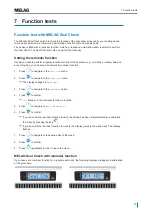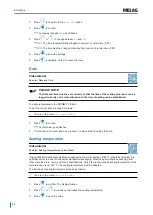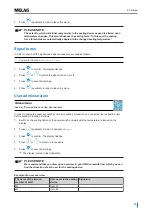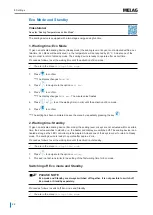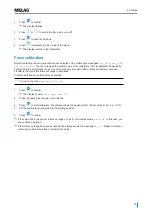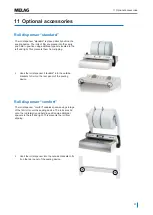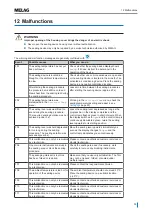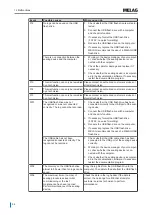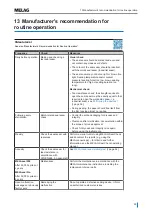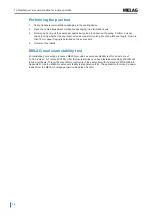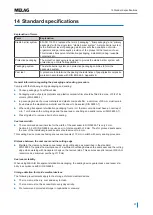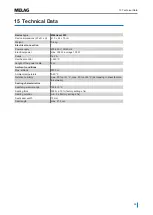
13 Manufacturer's recommendation for routine operation
35
13 Manufacturer's recommendation for
routine operation
See also “Manufacturer’s Recommendation for Routine Operation”.
Video tutorial
Frequency
Check:
Measures
Daily before operation
Making and checking a
test seal seam
Visual check:
▪ The seal seam should be distinct and even and
not contain any creases or defects.
▪ The colour of the seal seam should be identical
with the works seal seam (industrial seam).
▪ The seal seam may not be too light or brown (too
light: Sealing temperature and/or contact
pressure (sealing force) too low; brown sealing
temperature too high or sealing duration too
long).
Mechanical check:
▪ Tear-resistance check: the strength required to
open the seal seam must be exactly equal to that
required to open the works-side seam, i.e.
industrial seam, see
▪ During peeling, the paper should free itself from
the film, leaving almost no residue.
Following every
sterilization
Batch-related seal seam
check
▪ Control the entire packaging for dryness and
integrity.
▪ Clearance after sterilization, documentation within
the scope of process approval.
▪ Check for dryness and integrity once again,
before using the instruments.
Weekly
Check the seal seam with
resources
Perform a visual control using MELAG Seal Check
and document the results (e.g. using the
MELAconnect app) – for criteria and further
information, see the MELAG Seal Check operating
manual.
Annually
Check the seal seam for
tear-resistance in
accordance with
DIN EN 868-5, Appendix D
MELAG seal seam stability test
[
MELAseal 200
After 50,000 cycles or
4 years
MELAseal Pro
After 50,000 cycles or
2 years
Maintenance
Perform the maintenance in accordance with the
MELAG maintenance instructions, including the
replacement of wear parts.
Upon malfunction
messages or obviously
faulty seals
Remedying the
malfunction
Do not operate a defective sealing device. Inform
an authorized customer services.

